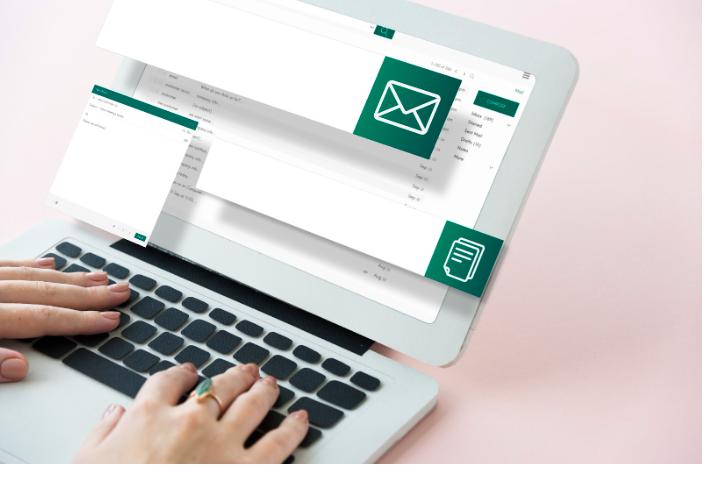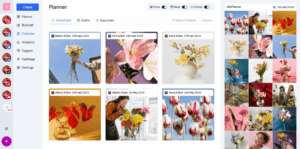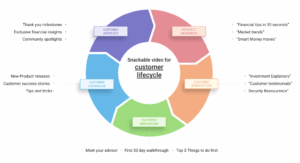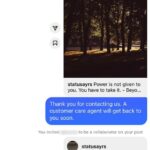By Christopher Tweten
Small businesses often struggle to get in front of the right people. Without big ad budgets or a steady stream of referrals, growth can feel slow and unpredictable. Cold emailing helps fill that gap. It’s a low-cost, low-effort way to connect with potential clients and grow your reach.
The beauty of cold email is how easy it is to get started. Even a one-person team can use tools like Instantly to automate outreach and start generating leads right away.
But does it actually work?
Yes. In fact, nearly 90% of marketers say email is their top lead generation channel, and it’s easy to see why.
When done right, cold emails help small businesses connect with the right people, build trust, and turn leads into long-term clients.
This guide will walk you through how to use cold email to grow your business, step by step.
What is Cold Email? Is It the Same as Email Marketing?
Cold emailing and email marketing might sound similar, but they’re not the same.
A cold email is sent to someone you’ve never contacted before. They don’t know you, and they didn’t sign up to hear from you.
Email marketing is different. It’s only sent to people who already know your brand. They’ve subscribed or opted in, and they have given you permission to show up in their inbox.
So while both use email, the intent and audience are completely different.
This often leads to one common rookie mistake: writing cold emails like marketing emails: long, flashy, and full of stuff the reader didn’t ask for.
Cold email also isn’t the same as spam. Spam goes out in bulk, often to random addresses with no real targeting. A cold email, on the other hand, is usually sent to a specific person you’ve researched and identified as a good fit.
How Small Businesses Can Get Cold Email Right
Cold outreach can do a lot for your business. It brings in leads, builds brand awareness, and helps turn curious prospects into customers.
And it’s a relatively simple process. Here’s how to get started:
Step 1: Build Your Email List
You can’t run a cold email campaign without people to reach out to. So the first step is obvious: build your list.
Start by narrowing your focus. Think about who your best customers are. What do they have in common? Use that to create an Ideal Customer Profile (ICP). This helps you target the right people and makes your emails more relevant, which means better chances of getting replies.
Once you’ve got your ICP, it’s time to gather contacts. Your list should include useful details like names, job titles, and verified email addresses.
You can build this list manually, but it takes time. If you want to speed things up, some cold email tools also give you access to millions of verified professional profiles, so you’re not starting from scratch.
Step 2: Learn to Write a Cold Email That Gets Results
Most cold emails never get a reply. Not because people are rude — they just don’t see a reason to respond.
If you want your message to stand out, you need to be clear, relevant, and respectful of their time. It comes down to a few simple tactics that anyone can learn.
Here’s what you need to know to get started:
Write Subject Lines That Actually Get Opened
Your subject line is your first impression. If it doesn’t catch their eye, nothing else matters. Think of it as a headline. It should give them a reason to open without overselling.
Some simple rules to follow:
- Keep it short: 5 to 7 words is a good range.
- Avoid spammy words that trigger filters (We’re looking at you, “Free”, “Guaranteed”, and “Buy Now”)
- Make it interesting enough to earn a click.
Keep Your Message Short and Clear
Your message should be short, clear, and focused on the person you’re writing to, not on you.
Aim for 100 to 150 words, max. You only have a few seconds to show them you’re offering something real and useful. Make them count.
But before you hit send, check that your email does the following:
- States the reason for reaching out.
- Makes it clear what’s in it for them.
- Uses “you,” more than “I” or “we.”
End With a Clear, Simple Call to Action
Don’t forget to guide your reader on what to do next. A strong closing line should tell them exactly what action you’d like them to take.
Think about it from their side. If this email landed in your inbox, what would feel like a reasonable next step?
Since this is a cold email, keep your ask small. You might suggest a quick call, ask if they’re the right person, or invite them to reply if they’re interested. Just make it easy to take the first step.
Always Personalize
This is where most cold emails fall flat. If it looks like a mass message, it’s probably going straight to the trash.
Take a few minutes to research each prospect. Find something relevant and specific to them—a recent project, a shared connection, a detail from their website—and use it in your message. Show them the email was meant for them, not anyone.
Don’t have time to personalize every email manually? Use cold email tools that can pesonalize at scale. Many platforms now offer dynamic personalization and can adjust content based on behavior or buying signals.
With the right tools, personalization doesn’t have to be a time-sink, and it can make a big difference in your results.

Step 3: Follow Up
Just because someone didn’t reply the first time doesn’t mean they’re not interested. In fact, most cold emails don’t get a response right away; that’s normal.
A follow-up email can boost your open rates by around 30%. Sometimes, it’s the second or third message that actually gets noticed, especially if it brings extra value or a new angle.
But if you’re going to follow up, do it right.
Don’t Be a Nuisance
Space out your follow-ups. Your first one can go out two or three days after the initial email. After that, give it more room, maybe a week or two between later messages. No one likes getting flooded.
Skip the Copy-Paste Templates
People can spot a generic email in seconds. If it sounds like it was written for “everyone,” it’s going to get ignored. Keep your follow-ups short, friendly, and as personal as possible.
Let Sequences Do the Work
Manually following up with every lead takes forever. Use cold outreach tools to set up automated follow-up sequences. That way, you stay consistent without spending hours in your inbox. Save the manual follow-ups for the leads that really matter.
Step 4: Analyze and Track
Once your emails go out, your job isn’t done. You need to track how they perform. Without data, you’re just guessing.
Here are the key metrics to watch:
- Deliverability Rate
This tells you if your emails are actually reaching inboxes instead of getting lost in spam folders.
A few benchmarks to keep in mind:
- Your delivery rate should be at least 95%.
- A bounce rate under 3% is acceptable.
- If your spam complaint rate goes above 0.1%, you risk getting flagged or even losing your account. That’s something to avoid at all costs.
- Reply Rate
This is the percentage of emails that get a response. For instance, if you send 100 emails and get 10 replies, that’s a 10% reply rate.
There’s no hard rule here, but many cold email pros say 10% is a good average. If you’re getting close to that, you’re on the right track.
- Click-Through Rate
CTR measures how many people took action after reading your email. That might mean clicking a link to book a call or check out your product.
The average CTR for cold emails is around 2.3%. It can vary by industry, but this gives you a decent starting point.
Final Thoughts
Cold emailing doesn’t need to feel like a shot in the dark. With the right approach, it can be one of the simplest, most cost-effective ways to connect with potential clients.
For small businesses, the key is to focus on quality over quantity. Know who you’re reaching out to. Craft emails that speak directly to them. Follow up thoughtfully. And use tools that help you stay organized without adding extra work to your plate.
You don’t need a big team or a massive budget to see results. You just need a clear message, a smart process, and a little consistency.
The kind of stuff that Social Hire do…
At Social Hire, we don’t just do social.
What the Social Hire gang loves is making a difference for our clients, and we don’t want to waste your, or our resources on campaigns that aren’t right for your organisation, if it doesn’t get your organisation the difference you need – we prefer a better approach. When your business utilises social media management, Social Hire get your brand the exposure it needs and offer your business the lift it needs to improve.
The social media marketers in our company are the best in the business at helping our partners enhance their online marketing. We outline and implement cutting-edge social media marketing plans that help our customers realise their organisational objectives and further their social media presence. Our experienced team of digital experts do your social media strategy creation and management in an uncomplicated monthly plan that is cost-effective and is genuinely useful, whatever results you demand from your online marketing management.
Our team of managers are a team that assists our partners improve their digital presence by producing online marketing services on a regular basis. Our service is transparent and economical, which ensures that you get a great service and results that make a difference when you utilise our services. We arrange many different marketing services for enterprises from small businesses to large corporations to help make the most of of your company’s digital and social marketing.
You might like these blog posts How to Support Employee Well-Being this Winter [Infographic], 3 Key Findings Small Businesses Need to Know About Today’s Employees, How to Rid Your Company Culture of Work-Related Stress, and Performance Reviews, Hollywood Style.
Back to Small Business blogs








